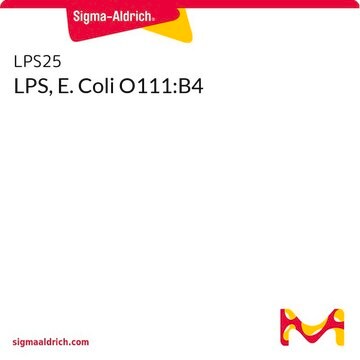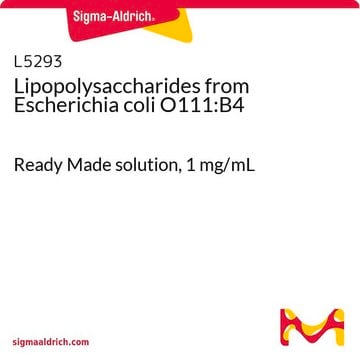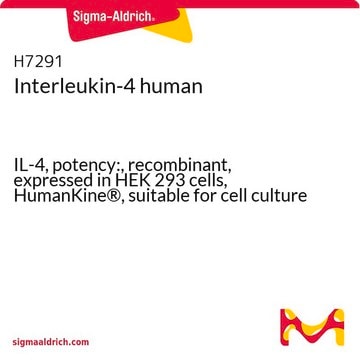L7018
Lipopolysaccharides from Pseudomonas aeruginosa 10
purified by trichloroacetic acid extraction
Sinônimo(s):
LPS
About This Item
Produtos recomendados
fonte biológica
Pseudomonas aeruginosa (10)
Nível de qualidade
Formulário
lyophilized powder
purificado por
trichloroacetic acid extraction
Impurezas
1-10% Protein (Lowry)
cor
white to yellow
solubilidade
water: 4.90-5.10 mg/mL, hazy to turbid, colorless to light yellow
Condições de expedição
ambient
temperatura de armazenamento
2-8°C
Procurando produtos similares? Visita Guia de comparação de produtos
Descrição geral
Aplicação
Ações bioquímicas/fisiológicas
Nota de preparo
Outras notas
produto relacionado
Código de classe de armazenamento
11 - Combustible Solids
Classe de risco de água (WGK)
WGK 3
Ponto de fulgor (°F)
Not applicable
Ponto de fulgor (°C)
Not applicable
Equipamento de proteção individual
Eyeshields, Gloves, type N95 (US)
Escolha uma das versões mais recentes:
Certificados de análise (COA)
Não está vendo a versão correta?
Se precisar de uma versão específica, você pode procurar um certificado específico pelo número do lote ou da remessa.
Já possui este produto?
Encontre a documentação dos produtos que você adquiriu recentemente na biblioteca de documentos.
Os clientes também visualizaram
Artigos
Explore the structure, function, and diverse applications of Lipopolysaccharides. Discover their role in bacteria, serological specificity, and research potential.
Conteúdo relacionado
Lipopolysaccharide (LPS) is a major component of Gram-negative bacteria, important for microbiological research.
Active Filters
Nossa equipe de cientistas tem experiência em todas as áreas de pesquisa, incluindo Life Sciences, ciência de materiais, síntese química, cromatografia, química analítica e muitas outras.
Entre em contato com a assistência técnica




